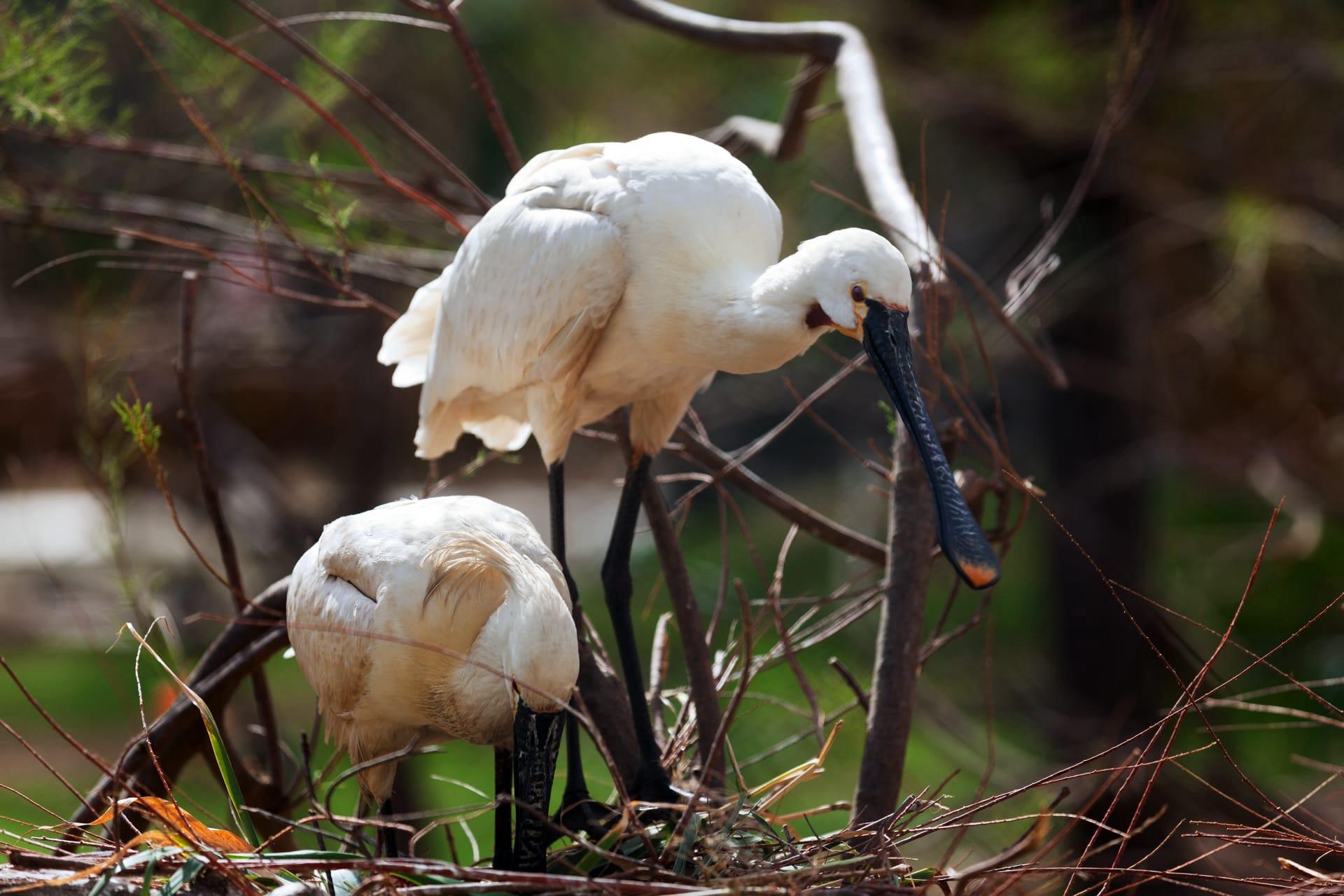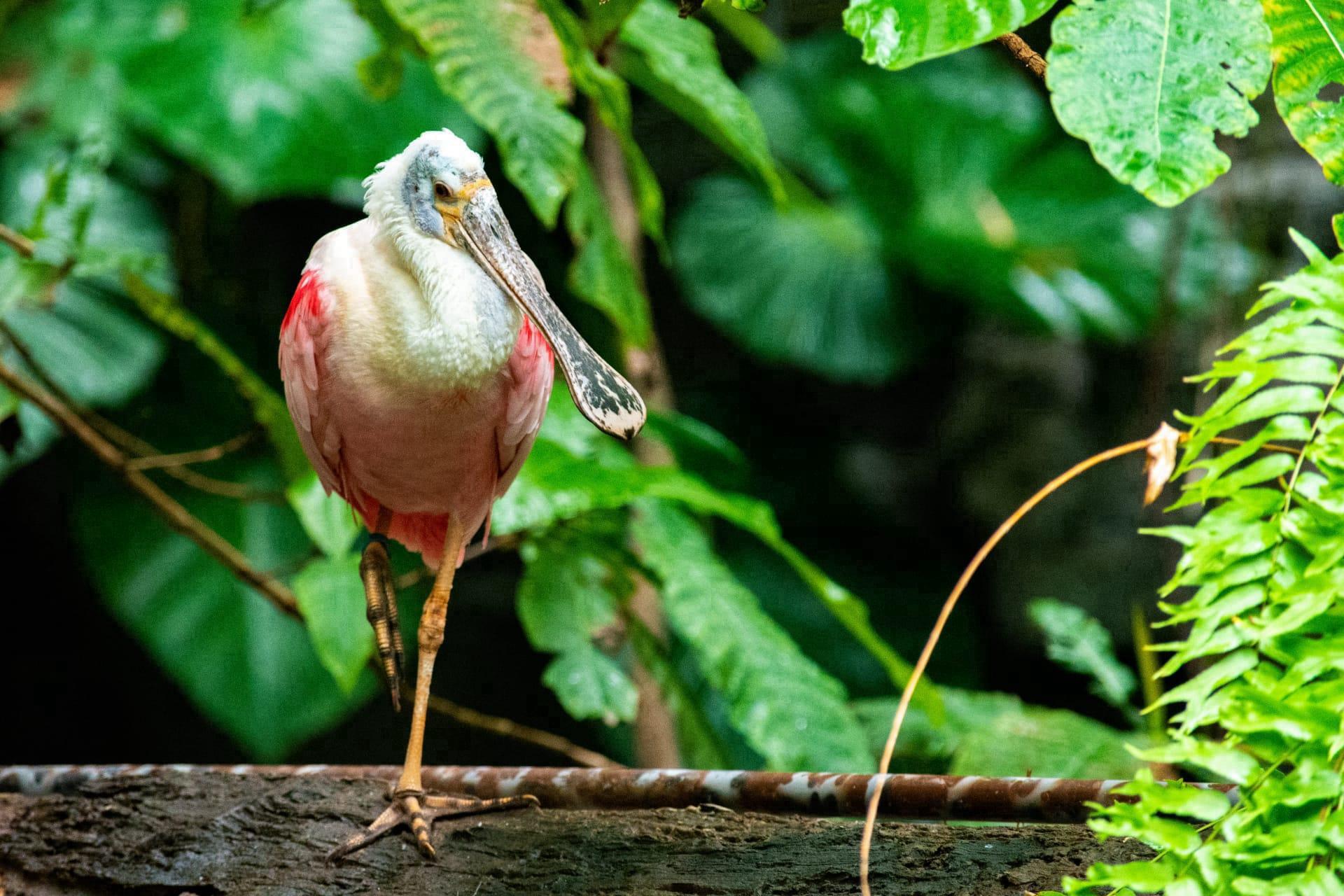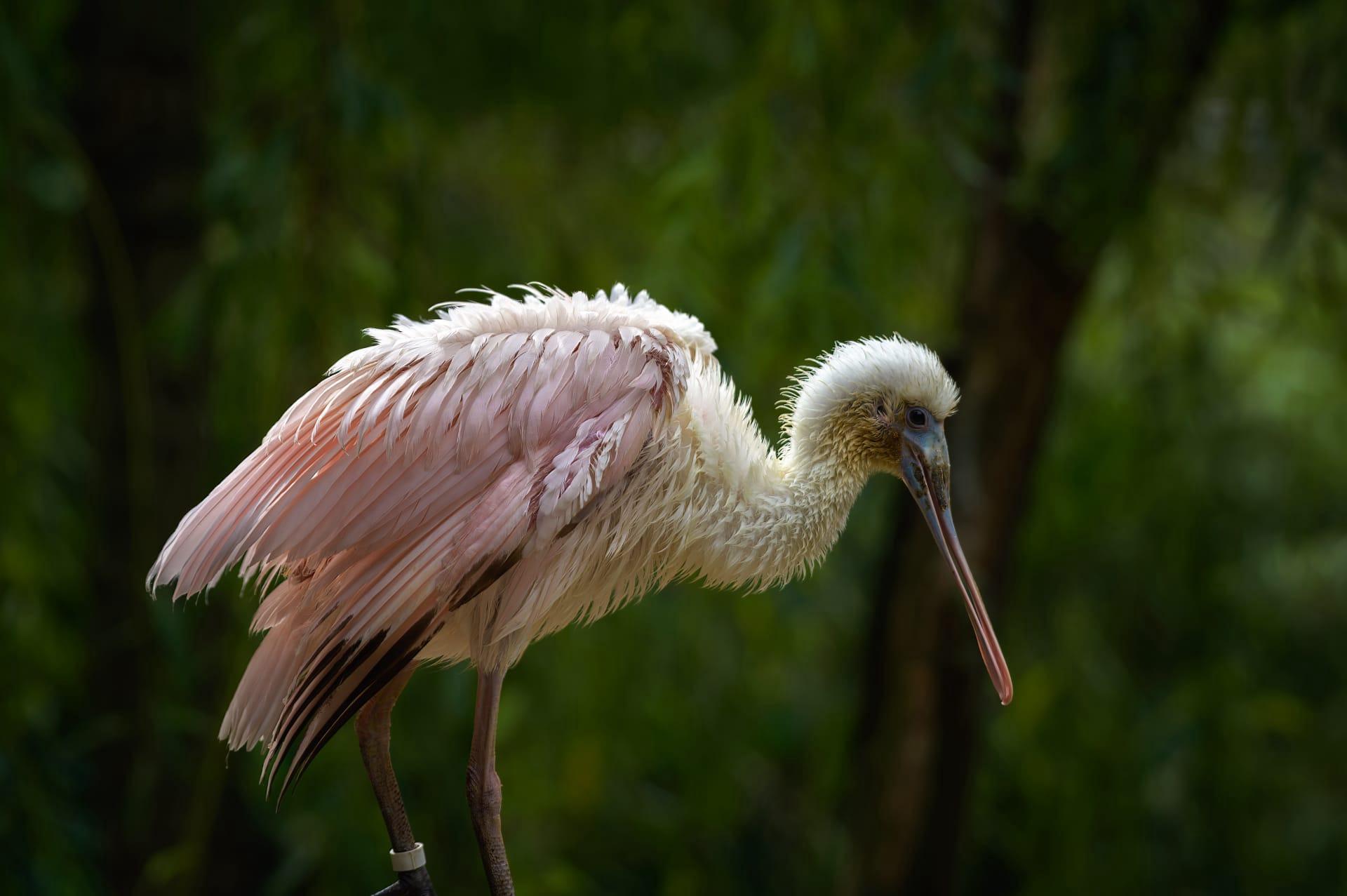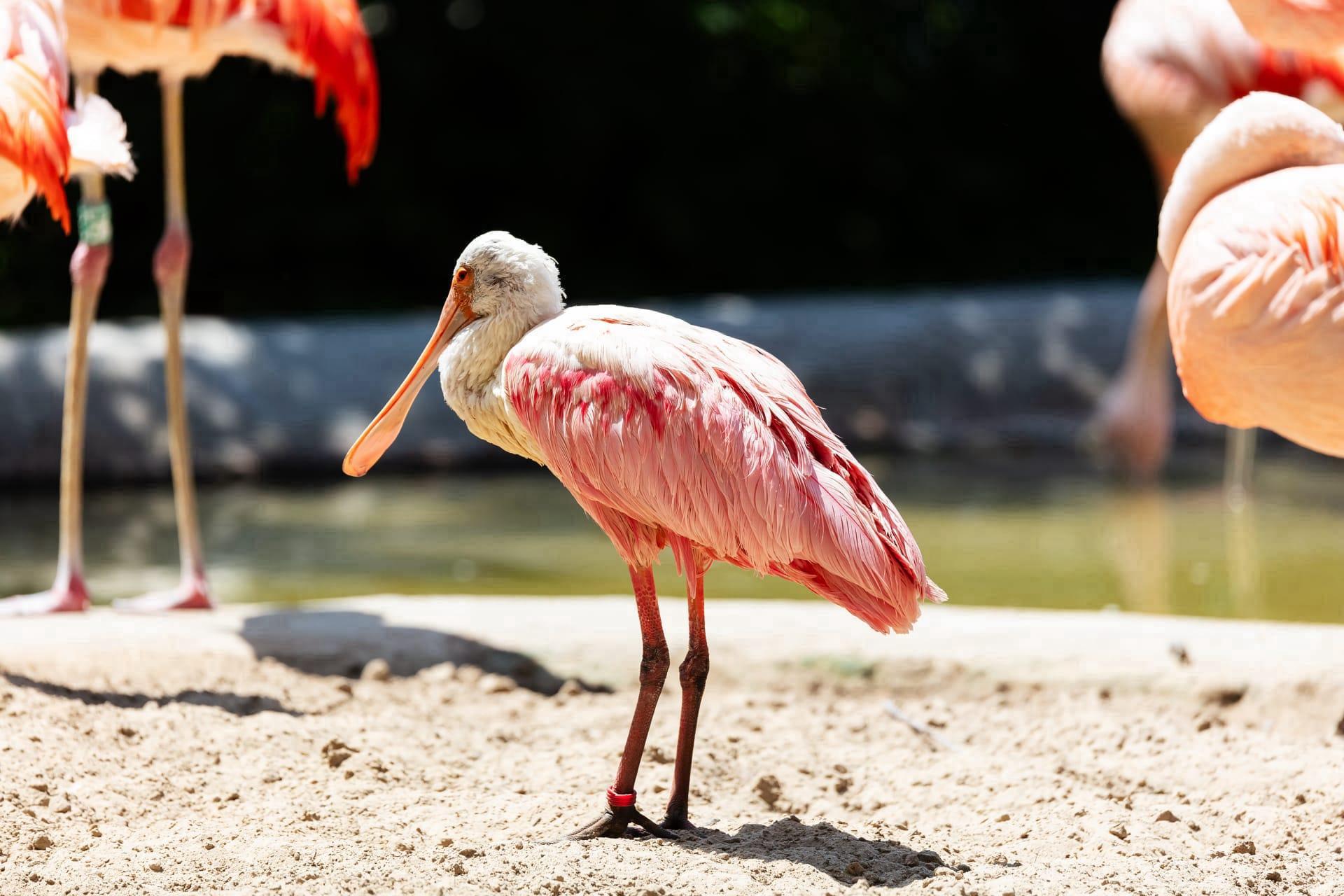Spoonbill Characteristics
- Home /
- Mini Encyclopedia /
- Animal /
- Spoonbill Characteristics
1
Spoonbills, distinguished by their long, flat, spoon-shaped bills, are a fascinating species in the bird world. On average, these birds measure about 30 inches in length, with a wingspan reaching up to 50 inches. Their body weight typically ranges between 1.2 to 2.1 kilograms. Spoonbills have a life expectancy of approximately 10 to 15 years in the wild, though this can extend up to 20 years in captivity. Their distinct coloration, usually a combination of white, pink, and light red, adds to their visual appeal, making them a favorite among birdwatchers.
The most unique organ of the Spoonbill is undoubtedly its bill. Unlike other birds, the Spoonbill's bill is elongated and broadens into a spoon shape at the tip. This specialized bill is not just for show; it plays a crucial role in the bird's feeding behavior. Spoonbills use their bills to sift through mud and shallow water, swinging their heads from side to side to catch small fish, crustaceans, and aquatic insects. This foraging technique is known as "tactile feeding," where the bird relies on touch rather than sight to find food. The sensitive nerve endings at the tip of the bill detect prey, allowing the Spoonbill to snap its bill shut at lightning speed.

2
Question: Why are Spoonbills pink?
Answer: The pink coloration of Spoonbills is a direct result of their diet. These birds primarily consume crustaceans and small fish rich in carotenoids, natural pigments found in certain algae and other organisms that these prey species consume. As Spoonbills digest their food, these pigments are absorbed and deposited in their feathers, giving them a distinct pink hue. The intensity of the color can vary depending on the specific diet and the concentration of carotenoids it contains. This coloration is more prominent during the breeding season, serving as an indicator of health and vitality to potential mates.

3
Spoonbills are known for their elegant and somewhat leisurely flight. With slow, powerful wing beats, they can glide effortlessly over water bodies. Their flight is characterized by a steady, rhythmic motion, and they are often seen flying in a V-formation, which is energy efficient. The long legs trail behind, and the neck stretches out in front, giving them a distinguished appearance in the sky.
In terms of feeding, Spoonbills are tactile foragers. They wade through shallow waters, moving their bills from side to side in a sweeping motion. This technique allows them to feel and catch small aquatic animals. They feed in both fresh and saltwater habitats, often in groups, which can create a spectacular sight. The Spoonbill's diet mainly consists of fish, crustaceans, aquatic insects, and sometimes small amphibians. Their feeding habits are closely tied to water levels and the availability of prey, making them sensitive to environmental changes.

4
Spoonbills inhabit a range of wetland environments, including estuaries, saltmarshes, mangroves, and freshwater marshes. They prefer shallow, warm waters rich in food resources. These habitats provide them with ample feeding opportunities and are also crucial for their nesting and roosting needs. Spoonbills are found in various parts of the world, including Europe, Asia, Africa, and the Americas, demonstrating their adaptability to different environmental conditions.
Reproduction is a significant part of the Spoonbill's life cycle. They are generally monogamous and known for their elaborate courtship displays, which include bill clapping, mutual preening, and synchronized flying. Nesting usually occurs in colonies, often with other waterbirds. Their nests are built in trees, reeds, or shrubs near water. Females typically lay 2 to 4 eggs, and both parents share the responsibility of incubation and feeding the chicks. The young are fed regurgitated food and become independent after about 5 to 8 weeks, showcasing the species' strong parental care.

5
Book: "The Life of the Spoonbill and Ibis" by C. J. Cornish, first published in the early 20th century, offers an insightful glimpse into the lives of spoonbills and their relatives. This book, originating from the United Kingdom, delves into the natural history and behaviors of these birds. Cornish's writing vividly captures the elegance and unique characteristics of spoonbills, making it a classic among bird enthusiasts.
Book: "Wetland Birds: Habitat Resources and Conservation Implications" by Milton W. Weller, published in the 1990s, is a comprehensive guide that includes a section on Spoonbills. This book, from the United States, offers an in-depth look at the habitats crucial for the survival of wetland birds like the Spoonbill. It discusses the ecological significance of these birds and the conservation efforts needed to preserve their habitats. Weller's work is both educational and a call to action for environmental protection.